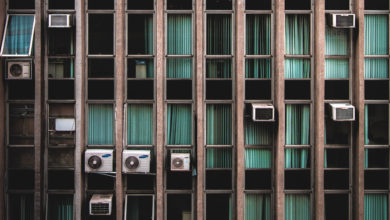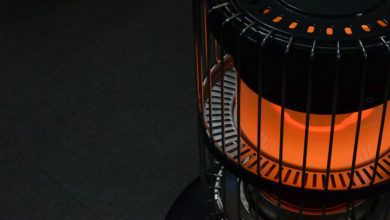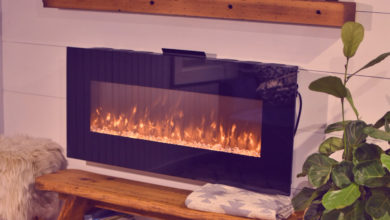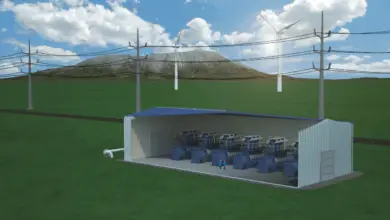Choosing between a blue flame heater vs infrared heater can be daunting if you’re not fully familiar with how these devices work. Both blue flame heaters and infrared – or radiant – heaters can work with either natural gas or liquid propane. Also, both types are vent-free, often portable, and work with 99.9% efficiency.
However, they deliver heat in a very different manner and each has its advantages and disadvantages, many of which are largely subjective. So, let’s first explain how both types of heaters work and then we’ll be able to do a proper blue flame vs infrared comparison.
Infrared radiant heaters
These heaters are designed to deliver a direct radiant heat by using electromagnetic radiation, not unlike the sun. This means that they don’t heat the air around them but instead heat the physical objects in the room directly – the closer an object is to the heater, the quicker it will get warmed up.
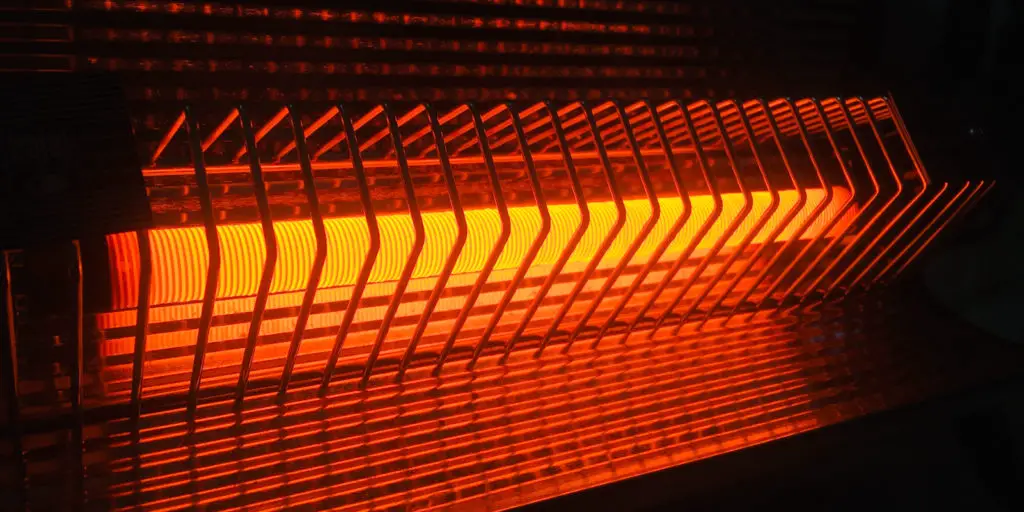
The main – and quite significant – drawback of infrared heaters is that they can easily ignite nearby objects if they are flammable. This means that you’ll need to set them up on a place where they can give you enough heat but there are no flammable objects nearby. Keep this in mind if you have kids or pets as they can often cause accidents by moving things around and getting them close to the infrared heater.
Blue flame heaters
These heaters work in a more “traditional” way, at least from most people’s point of view, as they use the natural gas or liquid propane to create a flame that heats up the air around the heater. The first thing a blue flame heater will warm-up is the wall to which it’s installed. From there, the heat will move toward the ceiling and then – through the rest of the room.
Because blue flame heaters work by heating up the air around them, they are ideal for spaces that are well-insulated, i.e. your living rooms, bedrooms, etc. Additionally, a blue flame heater can work very well in conjunction with a ceiling fan – if you simply set the fan to rotate in reverse, it can help distribute the warm air from the heater throughout the rest of the room.
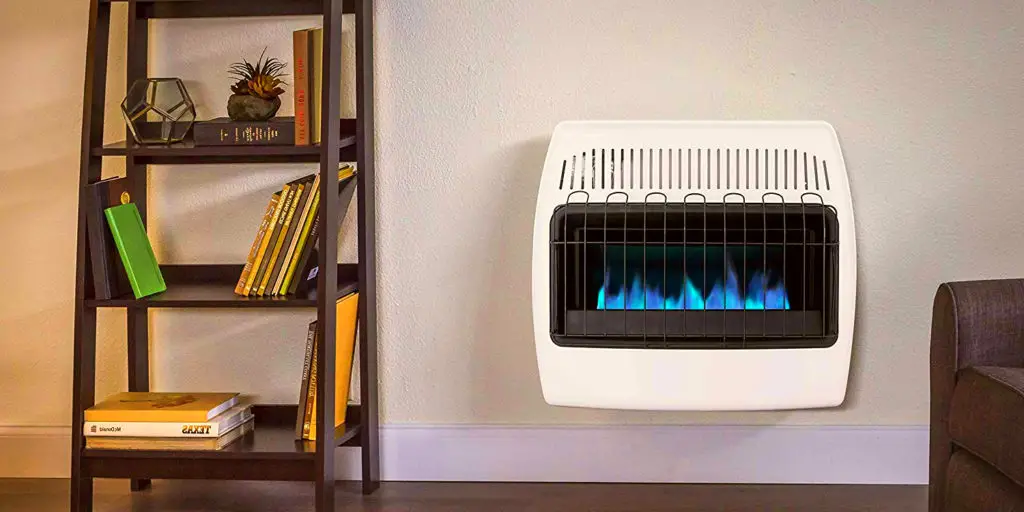
Is blue fire hotter than an orange flame?
A common question a lot of people have about blue flame heaters is whether the color of the flame is due to its hotness. This is an intuitive question to ask but blue flames are not necessarily hotter than orange/yellow flames. They could be but the color of the flame is not directly related to its heat. Instead, the color of the flame depends on what exactly is the chemical that you’re burning, what’s the frequency of the light it produces (higher frequency is blueish and lower frequency is reddish), and several other factors.
Suffice it to say that blue flames and orange flames are both very hot and blue flame heaters are designed to deliver just the right temperature while still being safe to use indoors.
Blue flame vs infrared radiance
In conclusion, both types of heaters are excellent at what they do but they are meant for slightly different purposes. Blue flame heaters should be used almost exclusively in well-insulated indoor, and medium-sized areas as they would be inefficient if the air around them is too much for their heating capacity. This means that using a single blue flame heater in a room that’s too large or too poorly insulated won’t deliver the result you likely want (each blue flame heater model will have a different capacity and heating capabilities so check what volume of air space it’s designed for).
Radiant infrared heaters, on the other hand, can work in both well-insulated and poorly insulated spaces since they don’t bother heating the air around them but warm up the objects directly. This is a huge plus for poorly insulated spaces that can’t be heated effectively with a flame heater. However, for well-insulated spaces, we’d recommend a blue flame heater because it’s safer and creates a more encompassing warmth in the air around you.

